Mizuno Toshikata – Part 4: The literary frontispiece
The third part of an eight-part series on the life and work of Mizuno Toshikata, an ukiyo-e artist and nihon-ga painter active during the turbulent Meiji period.
Recap: In the first part we looked at Mizuno Toshikata’s childhood and his apprenticeship with Tsukioka Yoshitoshi, one of the best-regarded ukiyo-e artists of the day. When Toshikata turned 19, he published his first woodblock print bearing his own signature, “Mizuno Toshikata,” marking his debut as an artist. In the second part, we looked how Toshikata shifted to creating book and newspaper illustrations when ukiyo-e was declining in popularity.
The outbreak of the First Sino-Japanese War in 1884, it meant an unprecedented surge in demand for a new genre of woodblock prints: sensō-e, or "war pictures." In the third part, we examined Toshikata's commissions that catered to the sensō-e craze.
But as the battlefield dust settled, the demand for woodblock prints dissipated as well. For Toshikata, it was time to turn the page and focus on other creative endeavors.
If you are just joining us, you can start the journey here:
The literary frontispiece
When the literary magazine Bungei Club was launched by publishing firm Hakubunkan in 1895, Mizuno Toshikata was hired to contribute illustrations. Over the course of nearly 40 years, Bungei Club would become a literary staple, playing a significant role in shaping modern Japanese literature and culture. It published the works of major writers such as Higuchi Ichiyo, Izumi Kyoka, and Kunikida Doppo.
Early Bungei Club issues resembled paperback novels about the size of an A5 pocketbook, featuring collections of novellas. Each issue included a “kuchi-e” frontispiece illustration. These kuchi-e became very popular with readers and a ubiquitous feature of all the literary magazines of the time, used to visualize the main story of the issue.
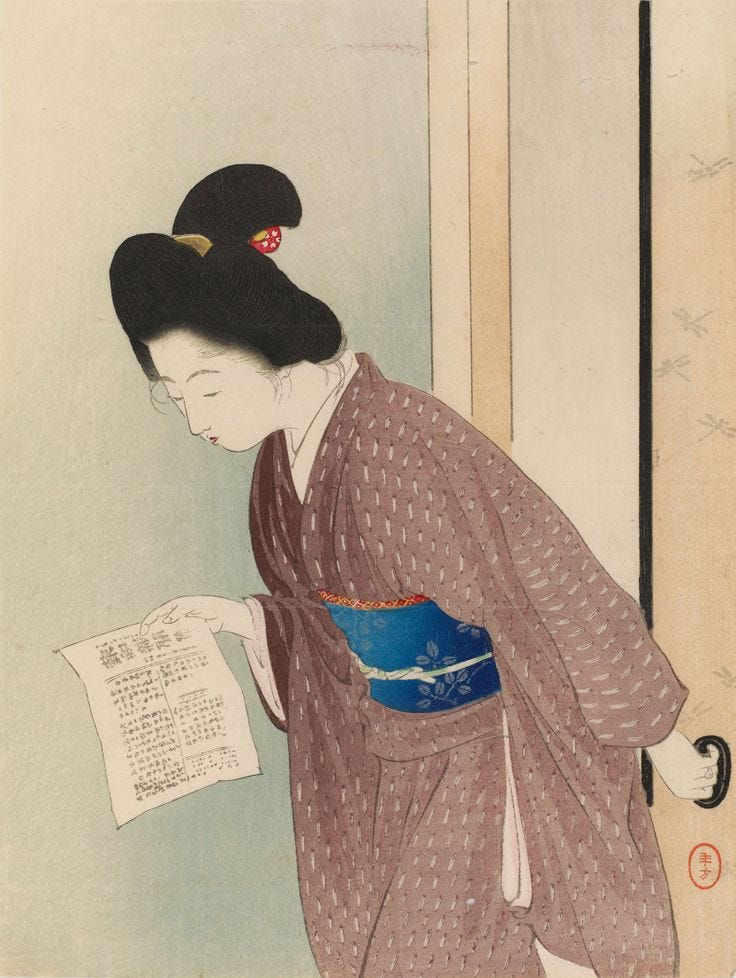
These woodblock prints (or, later, lithographs) were printed on separate sheets and usually folded once or twice to fit into the publications they accompanied. Very popular with readers, kuchie-e served as an important promotional tool to increase sales of novels and magazines.
Drawing on his experience as an illustrator for Yamato Shinbun, Mizuno Toshikata was responsible for creating kuchi-e frontispiece illustrations for a large number of issues. He illustrated famous works and authors such as “The Operating Room” and “Oizuru Soushi,” by Izumi Kyoka, “The Organ of Colors” by Iwaya Sazanami, “Saigyo Aizuma” and “Yume Gatari” by Kōda Rohan, “Unagi dan'na” by Yamada Bimyō, and “Oyakokoro” by Futabei Shimei.
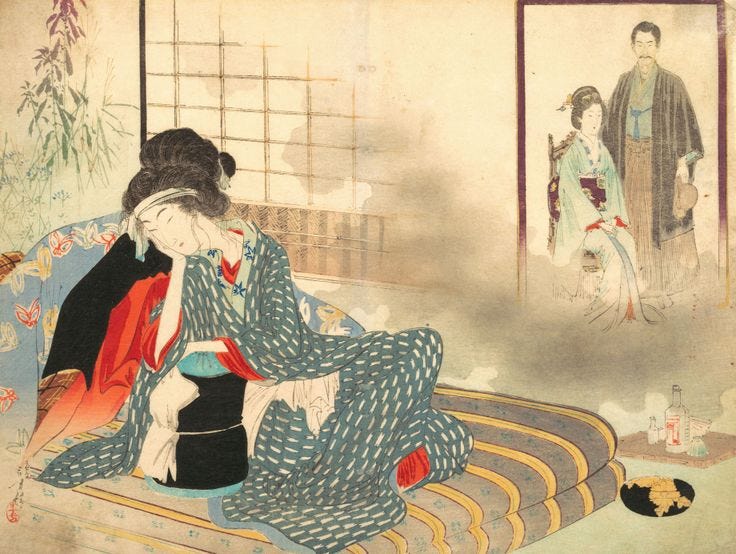
It is fascinating to see how Toshikata was able to adapt his style to the audience of his commission. The delicate lines, soft colors and gentle female figures of his kuchi-e illustrations contrast sharply with the intensity of his early work and the bombast of his senso-e propaganda prints, showing the wide range of expression in his repertoire.
Toshikata’s beautiful kuchie-e illustrations were well received. Coupled with his diligent attitude, they earned him the reputation of an illustrator whose work could determine book sales. Toshikata would work for Bungei Club for 13 years, until his passing. He drew 52 kuchi-e during this period, making him one of the most prolific contributors to the magazine.
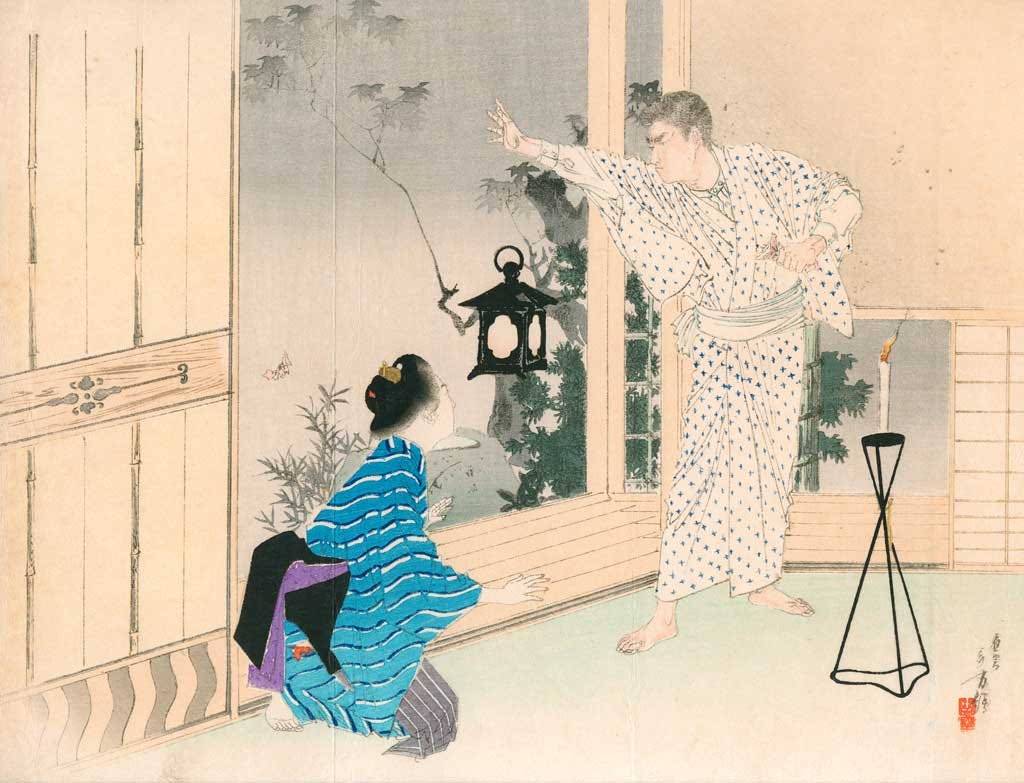
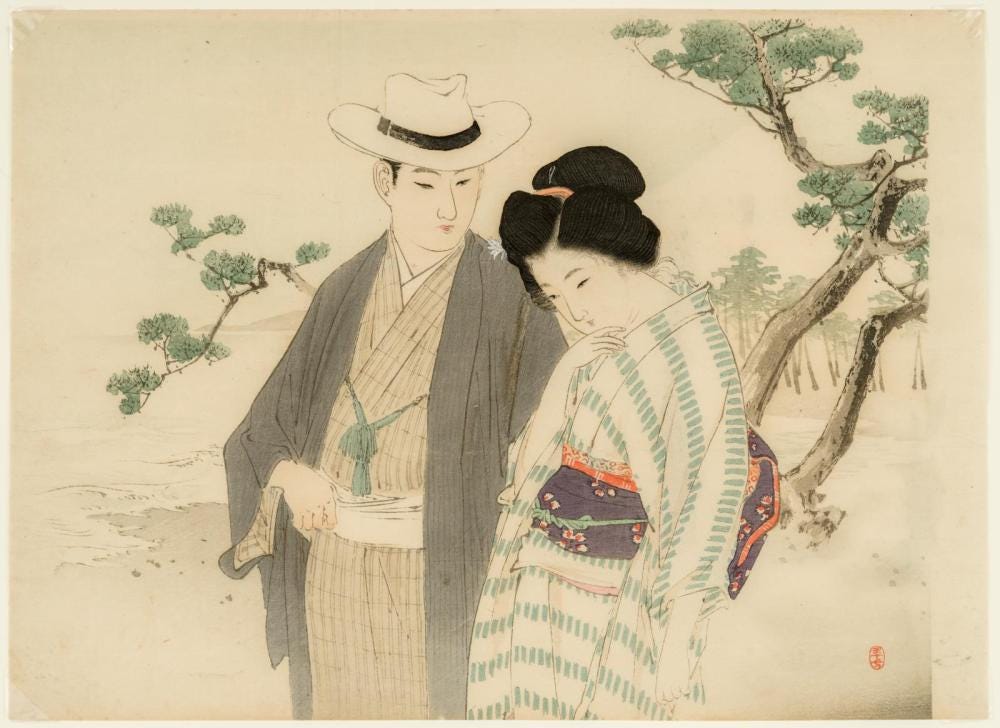
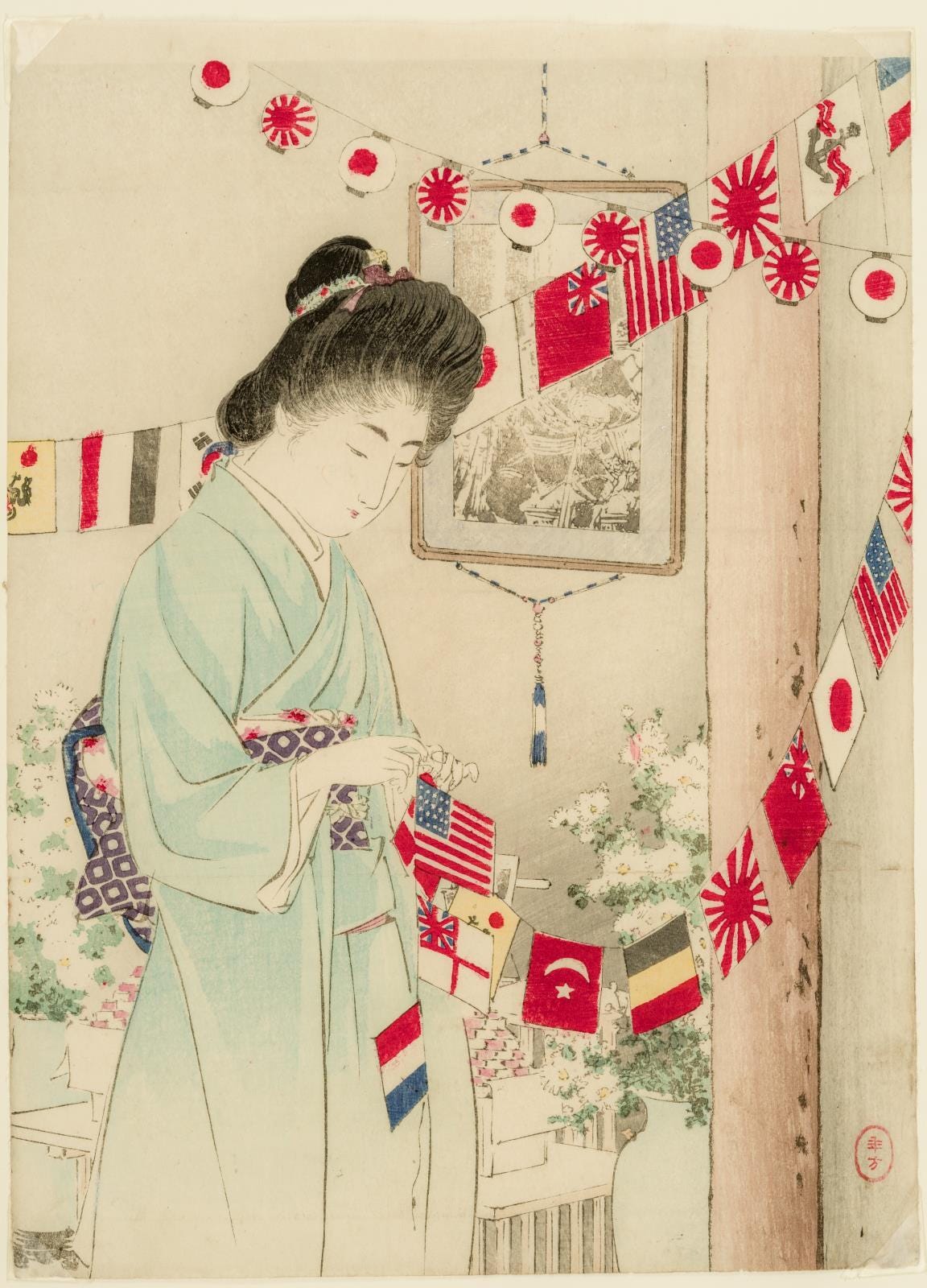
Elevated by the success of Toshikata’s kuchi-e illustrations, which largely centered around gentle female figures, Toshikata became famous for his bijin-ga, or “pictures of beautiful women.”
The next newsletter, Part 5: An eye for beauty, will focus on a selection of Toshikata’s signature bijin-ga prints.
I hope you'll join me again next time to explore Toshikata's gentle side further.
Thank you for reading The Arts of Japan’s Substack newsletter.
I hope you enjoyed it! If you did, please take a moment to hit the heart button at the top of the email or in the Substack app.
Feel free to share the post or subscribe to The Arts of Japan if you haven’t yet done so:
And, of course, Feel free to leave a comment! I would love to hear your thoughts. If you have additional information on the subject or found an error, your constructive feedback is always welcome too.
Stefan Yanku adapted this Substack issue from an article he published on The Arts of Japan’s website. For further credits and references, please visit the original article at https://artsofjapan.com/en/profiles/mizuno-toshikata
For copyrights and usage permissions, please refer to the article linked above and the general statement on our website, available at https://artsofjapan.com/en/impressum.


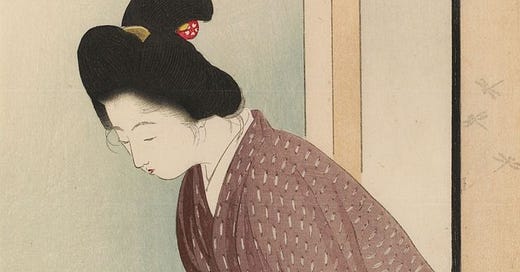



This was very interesting! Thank you for sharing this!